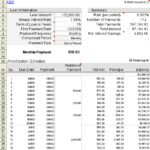
This essential tool can be accessed by navigating to the ‘Accounting’ menu, followed by ‘Reconcile.’ Once in the reconcile module, users can what is bad debt provision in accounting select the appropriate account and statement date for reconciliation. The reconcile tool offers functionalities such as matching transactions, flagging discrepancies, and providing a clear overview of the financial alignment between the records and the bank statement. Completing the reconciliation process in QuickBooks involves finalizing the matching of transactions, ensuring that the financial records align with the bank statement, and concluding the reconciliation task. It is crucial to ensure that all the transactions listed on the bank statement are accurately recorded in QuickBooks to maintain an accurate representation of the company’s financial status. By meticulously collecting and inputting this data, discrepancies can be identified and resolved promptly, preventing potential errors in financial reporting. Reconciling a bank statement in QuickBooks involves a series of steps to ensure that the recorded financial transactions align accurately with the bank statement, reflecting the true financial position.
When you reconcile, you compare your bank statement to what’s in QuickBooks for a specific period of time. In the end, the difference between QuickBooks and your bank accounts should be US $0.00, although processing payments can sometimes cause a small gap. Reconciling in QuickBooks Online involves several key steps to ensure that the financial records align with the bank statement and reflect accurate transactional data. When you have your bank statement in hand, you’ll compare each transaction with the ones entered into QuickBooks. We recommend reconciling your checking, savings, and credit card accounts every month.
Step 4: Compare your bank statement and QuickBooks
To see all of your adjustments on the list, you can review a Previous Reconciliation report for the reconciliation you adjusted. This will show you cleared transactions and any changes made after the transaction that may not show in your discrepancies. To reconcile, simply compare the list of transactions on your bank statement with what’s in QuickBooks.
How to Reconcile a Month in QuickBooks Online?
- Just like balancing your checkbook, you need to review your accounts in QuickBooks to make sure they match your real-life bank and credit card statements.
- When you have your bank statement in hand, you’ll compare each transaction with the ones entered into QuickBooks.
- Complete the reconciliation by clicking Reconcile Now to verify and finalize the process.
- When you reconcile, you compare two related accounts make sure everything is accurate and matches.
- It streamlines the reconciliation process, allowing for the identification and resolution of discrepancies more effectively.
It entails reviewing each transaction, comparing it with the corresponding bank statement entry, and making any necessary adjustments to ensure the accuracy of the records. This crucial process begins with gathering the bank statements and transactions from the relevant accounts. Once the data is collected, the next step is to depreciable asset definition compare the transactions recorded in QuickBooks with those listed in the bank statements, addressing any discrepancies.
When to reconcile
By reconciling transactions, users can confidently rely on the accuracy of their financial reports, ensuring that each transaction has been properly accounted for and is consistent with the bank statement. Reconciling previous months in QuickBooks Online involves the process of retroactively matching the financial records with the bank statements for specific past periods to ensure comprehensive financial accuracy. Linking your bank and credit card accounts to online banking allows for the automatic downloading of transactions and entry of the opening balance into QuickBooks Online. This article guides users through the detailed steps on how to reconcile in QuickBooks Online and QuickBooks Desktop, ensuring their financial data aligns seamlessly with bank and credit card statements. From preparing your documents to troubleshooting common reconciliation issues, we will offer practical tips, clear instructions, and insightful advice to make the process as straightforward and effective as possible. Reconciling a bank account in QuickBooks Desktop involves a series of structured procedures to ensure the accurate alignment of the financial records with the bank statement, reflecting the precise financial position.
If there are any discrepancies in the beginning balance, utilize the Locate Discrepancies tool to find and resolve them. If necessary, make adjustments to the opening balance or opt to Undo Last Reconciliation to start anew. When recording transactions in QuickBooks it’s important to ensure accuracy and completeness.

If you would like to streamline your reconciliation process in QuickBooks, Synder is the answer. Synder is a comprehensive financial management software that specializes in automating accounting processes for businesses, particularly those operating in ecommerce and using online payment platforms. Comparing transactions in QuickBooks with the bank statement is essential to identify any disparities and ensure the accurate alignment of financial records with the official bank records.
Adjustments may be necessary to rectify any inconsistencies and ensure that the financial records accurately reflect the actual bank activity. Whether you’re using QuickBooks Online or QuickBooks Desktop, understanding the process of reconciliation is crucial for ensuring the accuracy and integrity of your financial records. In this comprehensive guide, we’ll walk you through the step-by-step process of reconciling your accounts, including bank statements and balance sheet accounts. This step involves accessing the ‘Reconcile’ feature, selecting the appropriate account, and entering the closing balance provided by the bank. By doing so, it helps in detecting any discrepancies between the company’s records and the bank statement, thereby ensuring the accuracy of financial data.
When matching transactions, it’s important to compare each entry on your bank statement with the 200 journal entry thought process corresponding records in QuickBooks Online, paying close attention to dates and transaction details. If a transaction matches, mark it as reconciled by placing a checkmark next to its amount in QuickBooks Online. Transactions added or matched from online banking are usually pre-selected for convenience.
